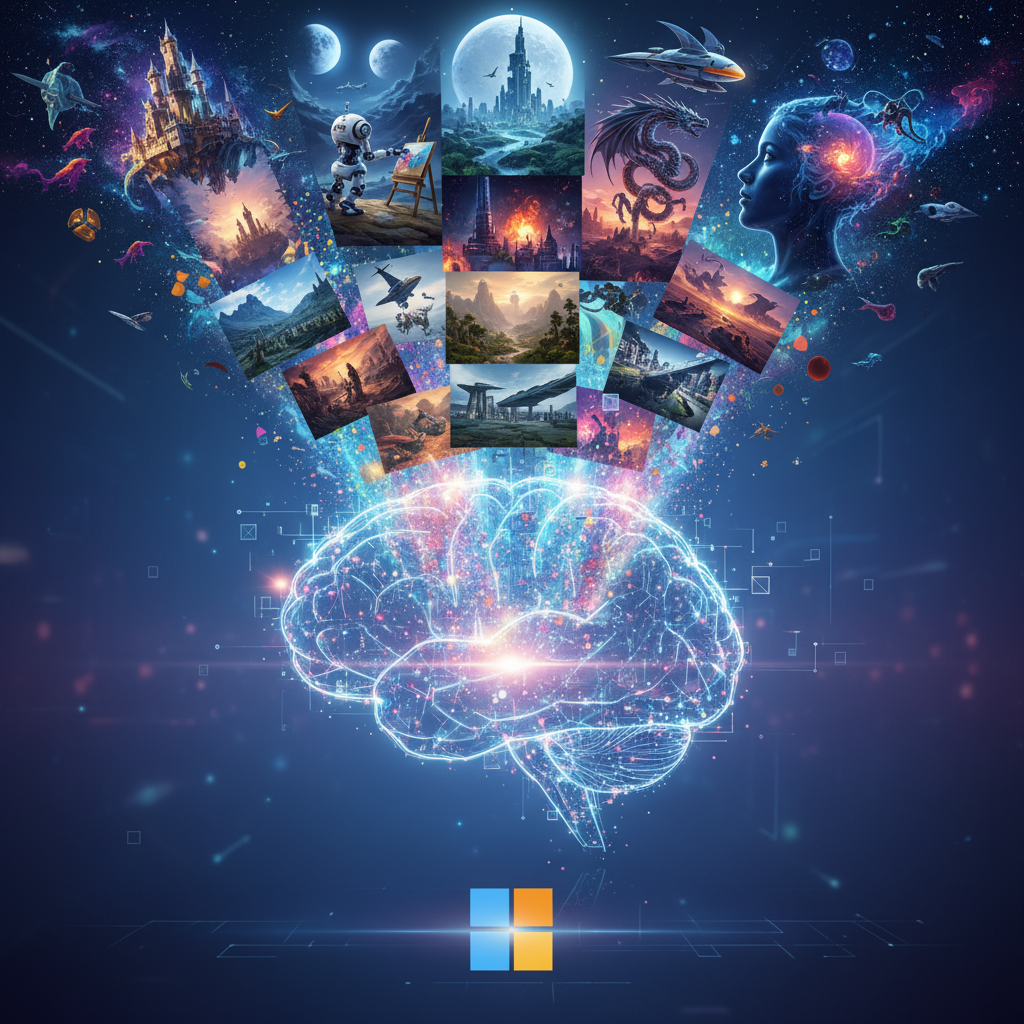Microsoft Enters the AI Art Arena: Introducing MAI-Image-1 and What It Means for the Future
The digital art landscape is buzzing with a fresh wave of innovation as Microsoft officially unveils its very first in-house AI image generator, MAI-Image-1. This isn’t just another addition to the rapidly expanding world of generative AI; it marks a significant strategic pivot for Microsoft, signaling a deeper dive into developing proprietary AI models and potentially reshaping its long-standing collaboration with OpenAI. Get ready to experience a new era of digital creativity, directly from Redmond.
For years, OpenAI’s DALL-E and other advanced models have been at the forefront of AI image generation, with Microsoft often leveraging these powerful tools in its own offerings. However, MAI-Image-1 represents a clear statement of intent: Microsoft is ready to forge its own path in the generative AI space. This independent development promises exciting possibilities for users across various Microsoft platforms.
The Dawn of MAI-Image-1: A New Era of Realism
So, what exactly can we expect from MAI-Image-1? According to Microsoft’s official announcement, this new model is particularly adept at producing stunningly photorealistic results. Imagine generating intricate landscapes with breathtaking detail, or portraits that capture the subtle nuances of human expression. This focus on realism sets it apart, indicating a powerful engine trained on vast datasets designed to mimic the intricacies of the real world.
One of the key strengths highlighted by Microsoft is MAI-Image-1’s ability to generate natural lighting. This is a crucial element for creating believable and immersive images. Whether it’s the golden hour glow over a rolling hill or the soft ambient light in an indoor setting, the model aims to reproduce these effects with remarkable accuracy. This attention to detail in lighting can elevate a generated image from merely “good” to truly exceptional, adding depth and atmosphere that often eludes less sophisticated models.
Another impressive capability is its prowess in generating landscapes. From serene beaches to majestic mountain ranges, MAI-Image-1 is designed to paint expansive and detailed natural scenes. This opens up a world of possibilities for artists, designers, and even everyday users looking to create custom digital art or visualize concepts with unparalleled realism. The days of hunting for the perfect stock photo might soon be a distant memory as MAI-Image-1 allows for on-demand, tailored visual content.
Strategic Independence: Shifting Gears in the AI Landscape
The introduction of MAI-Image-1 is more than just a technological achievement; it’s a strategic move that carries significant implications for Microsoft’s future in AI. By developing its own in-house models, Microsoft is actively decreasing its reliance on external partners, including its long-standing collaborator, OpenAI. This doesn’t necessarily mean an end to their partnership, but rather a diversification of Microsoft’s AI capabilities.
Building proprietary AI models offers several advantages. Firstly, it grants Microsoft greater control over the development roadmap, allowing them to tailor models specifically for integration into their own expansive ecosystem of products and services. This internal ownership also fosters tighter integration, potentially leading to more seamless user experiences within applications like Copilot and Bing Image Creator.
Secondly, it allows for greater flexibility and differentiation. While external partnerships provide access to cutting-edge technology, developing in-house solutions enables Microsoft to infuse its unique vision and priorities directly into its AI products. This could lead to specialized features, optimized performance for specific tasks, and a distinct “Microsoft flavor” to their generative AI offerings that sets them apart from the competition.
Looking Ahead: Where Will MAI-Image-1 Appear?
For now, MAI-Image-1 is undergoing rigorous testing on LMArena, a platform typically used for evaluating and benchmarking language models. This phased rollout ensures that the model is thoroughly vetted for performance, safety, and reliability before widespread deployment. The insights gained from this testing phase will be crucial in refining MAI-Image-1 and preparing it for mass adoption.
The exciting news for consumers and professionals alike is Microsoft’s stated intention to roll out MAI-Image-1 to Copilot and its Bing Image Creator “very soon.” This integration is a game-changer. Imagine leveraging the power of MAI-Image-1 directly within your everyday productivity tools, such as generating custom images for presentations in Copilot, or creating unique visual content directly through Bing Image Creator for social media, blogs, or personal projects.
This integration promises to make high-quality AI image generation more accessible and intuitive than ever before. For content creators, marketers, educators, and even casual users, the ability to effortlessly generate photorealistic images on demand could unlock new levels of creativity and efficiency. The potential applications are vast, from enhancing digital storytelling to streamlining design workflows.
A Creative Revolution in the Making
Microsoft’s debut of MAI-Image-1 is more than just a new piece of technology; it’s a testament to the accelerating pace of innovation in artificial intelligence. By investing in its own in-house generative AI capabilities, Microsoft is not only strengthening its position in the competitive AI landscape but also empowering its vast user base with powerful new creative tools.
As MAI-Image-1 makes its way into Copilot and Bing Image Creator, we can anticipate a new wave of creativity and visual content. The emphasis on photorealism, natural lighting, and detailed landscapes suggests a future where digital imagery is not just generated, but meticulously crafted by AI – bringing us closer to a world where imagination truly has no visual bounds. Keep an eye out for MAI-Image-1; it’s poised to redefine how we create and interact with digital images.
